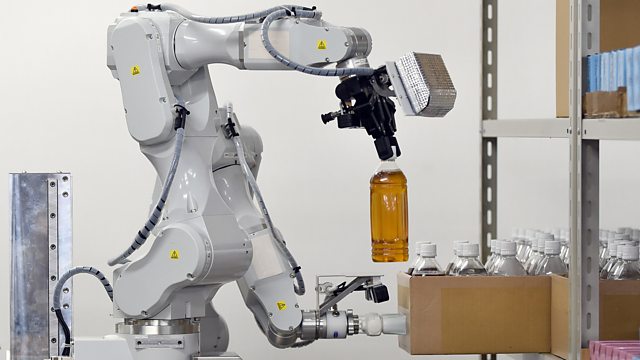Robots threaten the human workforce, but their ubiquity and growing competence make them crucial to the modern economy.
Robots threaten the human workforce, but their ubiquity and growing competence make them crucial to the modern economy. In 1961 General Motors installed the first Unimate at one of its plants. It was a one-armed robot resembling a small tank that was used for tasks like welding. Now, as Tim Harford explains, the world’s robot population is expanding rapidly (the robot “birth rate” is almost doubling every five years) and, coupled with rapid advances in artificial intelligence, robots are changing the world of work in unexpected ways.
(Photo: Robot, Credit: Toru Yamanaka/Getty Images)
Last on
Sources and related links
Nick Bostrum - Superintelligence: Paths, Dangers, Strategies, OUP, 2014
Klaus Schwab - The Fourth Industrial Revolution, World Economic Forum, 2016
��
Broadcasts
- Sat 4 Mar 2017 19:50GMT���˿��� World Service except Americas and the Caribbean, East and Southern Africa, News Internet & West and Central Africa
- Sun 5 Mar 2017 11:50GMT���˿��� World Service except News Internet
- Mon 6 Mar 2017 04:50GMT���˿��� World Service Australasia
- Tue 7 Mar 2017 23:50GMT���˿��� World Service Americas and the Caribbean
Podcast
-
![]()
50 Things That Made the Modern Economy
The stories of inventions, ideas and innovations which helped create the economic world


